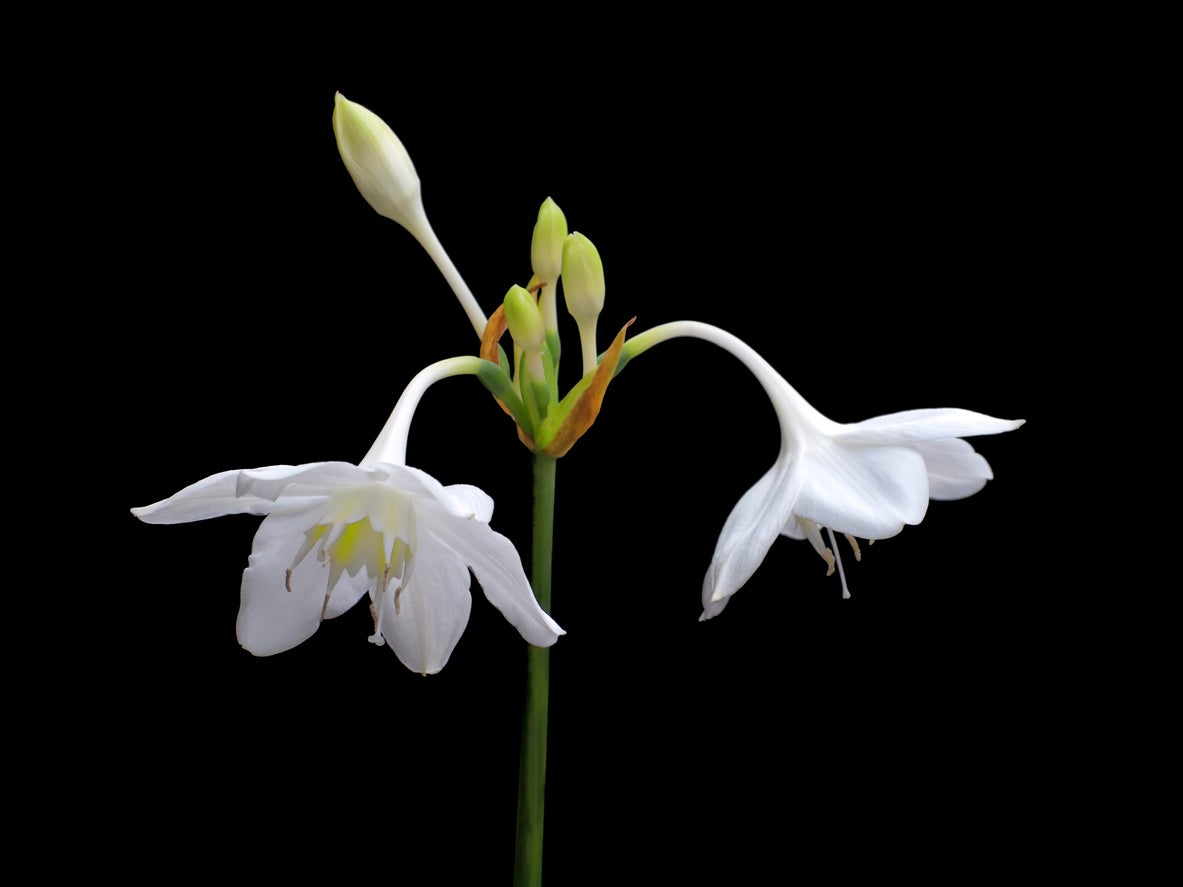Care Of Amazon Lily Flowers: How To Plant Amazon Lily Bulbs


The pretty Amazon lily is a great bulb to plant outdoors if you have the right climate. In most regions of the U.S., though, it is too cold but that shouldn’t stop you from planting Amazon lily in a container and enjoying it as a tropical houseplant.
What are Amazon Lily Bulbs?
Amazon lily (Eucharis amazonica) is a tropical bulb that produces hosta-like foliage and beautiful white flowers in clusters. As a tropical plant, there are few places in the U.S. it can be grown outside. Don’t attempt to grow Amazon lily outdoors unless you are in zone 10 or higher. Anywhere else, though, this is a great houseplant and you can move it outside for the summer months.
While the leaves are lovely, Amazon lily flowers are striking and why these bulbs make stunning houseplants. They can bloom up to three times a year producing star-shaped white flowers clustered on scapes that elevate them above the leaves.
Care of Amazon Lily Plants
When growing Amazon lilies in containers, you can fit three to five bulbs in a 6 inch (15 cm.) pot. Let the plants grow until they crowd the container before dividing, as they don’t like to be disturbed. Use a high-quality potting soil and put the bulbs in so that the neck is just above the surface.
Amazon lily prefers indirect light and high humidity. During growing times, keep the soil moist and spray or use a pebble tray for humidity. Make sure your plant stays warm in winter; it cannot tolerate temperatures below 55 degrees F. (13 C.).
There are few pests or diseases to worry about with Amazon lily, especially indoors. Make sure soil drains well and avoid overwatering to prevent root rot. Outdoors, you may need to protect the leaves from slugs and snails. Mites may be a problem as well.
Forcing Extra Amazon Lily Flowers
Your Amazon lily should bloom at least once per year, in the winter. To get more than one set of blooms per year, stop watering the container after the plant flowers. Let the soil get dry for about a month and start watering the plant again when you see new growth starting to emerge.
Gardening tips, videos, info and more delivered right to your inbox!
Sign up for the Gardening Know How newsletter today and receive a free copy of our e-book "How to Grow Delicious Tomatoes".

Mary Ellen Ellis has been gardening for over 20 years. With degrees in Chemistry and Biology, Mary Ellen's specialties are flowers, native plants, and herbs.
-
 Looking For Plants To Give You The Soft And Fuzzies? Try These 5 Fuzzy Leaf Plant Options
Looking For Plants To Give You The Soft And Fuzzies? Try These 5 Fuzzy Leaf Plant OptionsLovers of texture, drama, silver foliage and tactile plants will adore these special sensory garden additions. These fuzzy leaf plant options will leave you all aglow
By Susan Albert
-
 Get Ready For A Summer Of Hummers! Grow These Full Sun Hummingbird Plants and Flowers
Get Ready For A Summer Of Hummers! Grow These Full Sun Hummingbird Plants and FlowersIf you’re lucky enough to enjoy a sunny backyard, make sure you are maxing out on your pollinator opportunities and grow these full sun hummingbird plants and flowers
By Tonya Barnett